|
6/29/2023 Discover the Unparalleled Scuba Diving Combination: Unveiling the Marvels of a Komodo ExpeditionRead NowIntroductionAre you yearning for a one-of-a-kind adventure that seamlessly blends the exhilaration of scuba diving or snorkeling with the awe-inspiring exploration of captivating islands? Look no further! Maika Komodo Tour & Diving presents an extraordinary itinerary that immerses you in the breathtaking wonders of Komodo Island, Padar Island, Taka Makassar, and more. Get ready to embark on a remarkable journey, where the mysteries beneath the ocean's surface and the majestic landscapes above converge to create an unforgettable scuba diving combination Komodo trip. Your adventure commences at Sebayur Kecil, where you will embark on your first dive, ensuring your you diving levels are back in shape, if you have had a long break. This will get your ready for the adventures ahead. Submerge yourself in the crystalline waters and discover an underwater paradise teeming with vibrant marine life. Next, we venture to Siaba Besar, affectionately known as Turtle Point, where you will have the rare opportunity to encounter these magnificent creatures up close. As the day unfolds, we make our way to Taka Makassar, an ethereal sandbank offering picturesque views and ideal conditions for snorkeling. As the sun begins to set, prepare for a mesmerizing night dive around Padar Island, where nocturnal marine life reveals its hidden treasures, painting the waters with an otherworldly glow. Day 2: Unravel the Tapestry of Natural WondersAwaken to a new day filled with endless possibilities. Our first destination is Padar Island, where an invigorating trekking experience awaits. Ascend to the island's summit and be rewarded with panoramic vistas that stretch as far as the eye can see. Afterward, we set sail towards Komodo Island, the legendary abode of Komodo dragons. Embark on a guided trek, delving into the intriguing world of these ancient reptiles and marveling at their commanding presence. As the day progresses, we make our way to Pink Beach, where you will have the opportunity to dive and immerse yourself in a kaleidoscope of colors created by the vibrant coral reefs beneath the surface. Conclude the day with a visit to Mauan, a renowned manta ray sanctuary. Dive into the depths and witness these graceful giants as they gracefully glide through the azure waters, an encounter that will leave an indelible mark on your memory. Day 3: Dive into a Marine ParadiseDay three promises a Komodo scuba diving extravaganza that will leave you in awe of the extraordinary marine marvels that call Komodo home. Begin your day Scuba diving Batu Bolong, hailed as one of the region's premier dive sites. Descend into an underwater oasis bursting with life, where colorful corals and a plethora of marine species create an immersive and enchanting environment. For snorkeling enthusiasts, the north side of Siaba Besar beckons with its own captivating wonders. Explore the vibrant underwater world and witness a vibrant tapestry of marine life unfold before your eyes. Next, we set our course for Manta Point, where you will be captivated by the sight of majestic manta rays gracefully dancing through the ocean currents. Conclude this extraordinary journey at Tatawa Besar, home to a captivating coral garden. Dive beneath the surface and be enthralled by a mesmerizing display of vibrant corals, exotic fish species, and an ecosystem teeming with life. Conclusion: Craft Unforgettable MemoriesThe scuba diving Komodo National Park combination Komodo trip offered by Maika Komodo Tour & Diving presents an unparalleled opportunity to create extraordinary memories that will last a lifetime. Immerse yourself in the wonders of the underwater realm, explore the breathtaking islands, and witness the extraordinary diversity of marine life that thrives in the Komodo National Park.
Indulge your adventurous spirit, embark on this unforgettable journey, and let the captivating beauty of Komodo envelop you. From exhilarating encounters with sea turtles and manta rays to mesmerizing dives amidst vibrant coral gardens, every moment of this itinerary is designed to immerse you in the wonders of nature and awaken a profound sense of awe and appreciation. Book your ultimat Komodo Tour package today, and prepare to embark on a transformative adventure that will redefine your understanding of the underwater world and leave an indelible mark on your soul. Let the enchantment of Komodo captivate your senses and create memories that will be cherished for a lifetime.
0 Comments
6/16/2023 Taking the Plunge in Labuan Bajo: Explore Diving, Courses, and Komodo Island ToursRead NowLabuan Bajo, the hidden gem of Indonesia, beckons adventurers from around the world with its stunning natural beauty and unparalleled underwater wonders. Whether you're a seasoned diver or a beginner, Labuan Bajo offers an array of exhilarating experiences, including diving expeditions, professional courses, and unforgettable Komodo Island tours. In this blog post, we will take you on a journey through Labuan Bajo's aquatic realm, providing insights into the diving opportunities, courses available, and the breathtaking wonders that await. There are many things to do in Labuan Bajo for everyone! Discover the Underwater Paradise: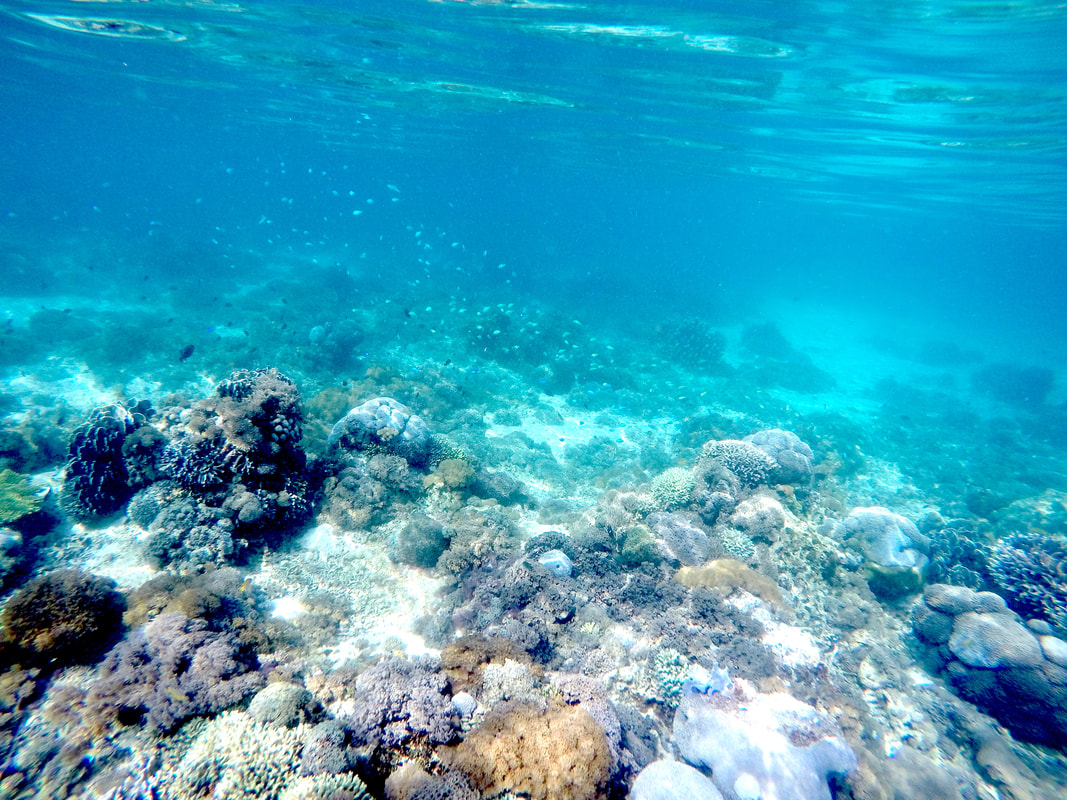 Labuan Bajo's crystal-clear waters boast an abundance of marine biodiversity, making it a dream destination for divers. Immerse yourself in a world of vibrant coral reefs, teeming with tropical fish, majestic manta rays, and even encounters with gentle sea turtles. Dive sites such as Batu Bolong offer thrilling experiences as you navigate through underwater canyons and witness the awe-inspiring marine life. Dive Courses for Beginners and Advanced Divers:Labuan Bajo caters to divers of all levels, offering comprehensive dive courses that will equip you with the skills and knowledge needed to explore the depths with confidence. Begin your journey with a Komodo Open Water Diving Course, where you'll learn the fundamentals of scuba diving and earn your certification. For experienced divers, advanced courses like Nitrox or Deep Diver Specialty courses provide opportunities to enhance your skills and unlock new diving adventures. Komodo Island Tours: Beyond Diving:Labuan Bajo is not just about diving; it's also the gateway to the incredible Komodo National Park. Embark on a thrilling Komodo Island tour and witness the prehistoric Komodo dragons in their natural habitat. Hike to the mesmerizing viewpoints of Padar Island, where panoramic vistas await. Take a dip in the pristine waters of Taka Makassar, a sandbar paradise. These excursions offer a perfect blend of adventure, wildlife, and breathtaking landscapes. Dive into Adventure: Diving Safari Excursions:For the ultimate diving experience, consider a diving safari in Labuan Bajo. Set sail on a liveaboard boat and explore multiple dive sites in the Komodo National Park. Dive into untouched waters, encounter mesmerizing marine creatures, and witness the magic of diving in some of the world's most sought-after locations. It's an adventure of a lifetime that will leave you in awe of Labuan Bajo's natural wonders. Plan Your Labuan Bajo ExperienceTo make the most of your visit, plan your Labuan Bajo experience in advance. Research reputable diving centers that offer courses suitable for your skill level and provide professional instructors. Coordinate with tour operators to customize your Komodo Island tour, ensuring you don't miss out on the must-see attractions. With proper planning, you can maximize your time and create unforgettable memories. Conclusion:Labuan Bajo invites you to take the plunge into an underwater paradise, embark on thrilling diving courses, and discover the wonders of Komodo Island. Immerse yourself in Labuan Bajo's rich marine biodiversity, learn new skills through diving courses, and explore the captivating landscapes of Komodo National Park. Whether you're an avid diver or a curious adventurer, Labuan Bajo offers an abundance of experiences that will leave you with cherished memories for a lifetime. FAQs:Is scuba diving in Labuan Bajo suitable for beginners?Absolutely! Scuba diving in Labuan Bajo caters to divers of all levels. Beginners can enroll in Open Water Diving Courses, where professional instructors will guide you through the basics and ensure a safe and enjoyable diving experience. What are the must-visit dive sites in Labuan Bajo?Labuan Bajo is blessed with numerous remarkable dive sites. Scuba diving in Batu Bolong is renowned for its vibrant marine life, while Manta Point offers thrilling encounters with majestic manta rays. Other popular sites include Crystal Rock, Castle Rock, and Pink Beach. Can I combine a diving trip with a visit to Komodo Island?Certainly! Many tour operators in Labuan Bajo offer combined packages that include diving expeditions and guided tours to Komodo Island. You can explore the underwater wonders and encounter the famous Komodo dragons during the same trip. How long should I plan to stay in Labuan Bajo to enjoy diving and Komodo Island tours?To fully experience the diving opportunities and Komodo Island tours, it is recommended to allocate at least 4-5 days. This will allow you to complete a dive course, explore multiple dive sites, and enjoy a comprehensive Komodo Island tour. What is the best time of year to visit Labuan Bajo for diving?Labuan Bajo offers diving opportunities year-round, but the best time to visit is during the dry season, from April to November. During this period, the weather conditions are more favorable, providing excellent visibility and calmer seas for diving adventures.
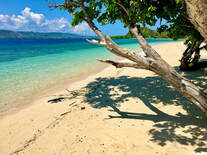 As anyone who spends a lot of time around beaches, the ocean, or scuba diving, plastic pollution has become a global problem. Unfortunately, there are millions of tons of plastic waste entering our oceans each year. Once in the ocean, plastic waste can persist for hundreds of years and has a profound negative impact on marine ecosystems. It's estimated that over 800 species of marine animals are affected by plastic pollution, either through ingestion or entanglement. Komodo National Park, situated in the heart of the Coral Triangle, is a unique and biodiverse area with an incredible range of marine life. The park is home to over 1,000 species of fish, 14 species of whales and dolphins, six species of sea turtles, and countless other marine animals. The marine ecosystem in the park is extremely fragile and is threatened by plastic pollution. One of the primary causes of plastic pollution in Komodo National Park is growing tourism. The park attracts thousands of visitors each year, many of whom engage in activities such as scuba diving and snorkeling. While these activities offer a unique opportunity to experience the beauty of the underwater world, they can also have a negative impact on the environment if not done sustainably. There are a few different ways of thinking. There has been talk about raising the ticket prices to limit the number of tourists visiting the national park, but other ways of thinking to just limit the number and educate tourists about plastic pollution without having to drastically raise the price. Scuba diving, in particular, can have a significant impact on marine life if not conducted responsibly. Plastic waste, such as plastic bags and bottles, can entangle and harm marine animals, while microplastics can be ingested by smaller marine creatures, which can then be consumed by larger animals in the food chain. In addition to harming marine animals, plastic pollution can also damage coral reefs and other essential parts of the marine ecosystem. This why it is extremely important to tourism companies and dive operators to do the best they can to educate their guests about plastic pollution and do their part to help the problem. The good news is that efforts are being made to address the issue of plastic pollution in Komodo National Park. Local authorities are working to promote sustainable tourism practices, such as reducing the use of single-use plastics and encouraging visitors to dispose of their waste responsibly. Tour operators are also taking steps to reduce their environmental impact, such as providing reusable water bottles and reducing plastic packaging. There are also things that scuba divers can do to help protect the marine environment. For example, divers can choose to use reef-safe sunscreens, which are free from harmful chemicals that can damage coral reefs. Divers can also avoid touching marine life, as this can cause damage and disrupt the natural ecosystem. In conclusion, plastic pollution is a serious threat to marine life and the environment as a whole. In places like Komodo National Park, where the marine ecosystem is particularly fragile, it's essential that we take steps to reduce our plastic footprint and promote sustainable tourism practices. By doing so, we can help to protect the marine environment for future generations and ensure that places like Komodo National Park remain beautiful and biodiverse for years to come. Even tour operators the offer Komodo Island Tours are doing more to educate the guests as well. If everyone works together to do the best for the park, things will get better and recover. Some companies are even offering Komodo Tour Packages that include beach clean ups and plastic pollution education. 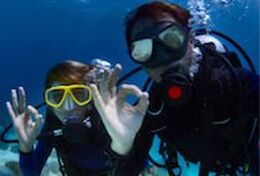 Komodo Island is a dream come true for scuba diving enthusiasts from all around the world. The are offers’ great variety of fish, colorful and untouched coral reefs, big fish in hunting actions, and as well, a wide range of pelagic fishes at every dive site. Komodo is a must for lover of scuba diving and because it offers an unforgettable diving experience each and every dive. The National Park is also home to numerous whitetip and blacktip reef sharks, and if you're lucky, you might spot bigger sharks like the Grey Shark and many Manta Rays as well. Taking a Komodo Liveaboard is a great way to get the most our of your diving experience. You can take a multi day trip or take a Komodo daily dive trip. Both are great way to see the park. Komodo diving is even better when you can do it day after day. As well, another famous thing about Komodo is the chance to dive with the Manta rays. Sometimes you can even release your air and sit on the sandy bottom of Manta Point and just enjoy the dance the Manta will put on for you. The best time to see manta rays is during the rainy season when you can sometimes literally have a chance to see schools of Manta rays. What is the best time to dive Komodo? When it comes to the best time to dive in Komodo Island, scuba diving in the Komodo marine reserve is possible all year round. Many people think the best diving conditions run from March to October, with the best season to see a lot of Manta rays being during the rainy season from December to February. This is a pretty popular opinion for anyone who dives a lot in the National park. Typically Visibility is best from November to January, and the sea can be a bit choppy from January to March, but usually nothing too bad, unless there is a big storm. Komodo is also famous amoung divers for the strong currents you may find. It is important to note that currents can be very strong on many of the dive sites, and diving in Komodo is mostly reserved for experienced divers with confidence in drift diving. There are, however, some quieter dive spots for beginners, but they may miss the incredible action of big fishes swimming into the current. The current can sometimes reach 8 knots in some places, driven by tides, so it is essential to choose your dive site carefully, which you can plan depending on the conditions. It is always recommended to listen and follow your dive guide for every dive. The Komodo waters are incredibly rich in marine life, including pelagic fishes such as Dogtooth Tuna, Giant trevally, Barracuda, and Manta rays. Sharks such as Blacktip, Whitetip, Grey, and some people have even spotted the rare Hammerhead sharks or whale shark. As well, you can spot all kinds of rare nudibranchs, pygmy sea horse, frog fish for macro diving. The coral all around the park is just amazing, some of the best around the world, and there are many shallow coral gardens offering wonderful snorkeling opportunities. It is important to note that scuba diving can be risky, and it is advisable to invest in travel insurance for scuba diving when planning an upcoming dive trip or traveling to Komodo Island. This insurance offers worldwide coverage and focuses on providing scuba divers with quality insurance and medical assistance services. Finally, it is crucial to trust the decision of your guide and follow their advice, as these waters can be a real roller coaster with the risk of being washed away in the open sea, and these guides are professionals. If you have any questions on Scuba diving in Komodo National park and would like to to a Komodo liveaboard experience, please contact Maika Komodo tour and our staff would be happy to help you plan the perfect diving trip in Komodo. 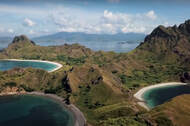 Komodo National Park is not only famous for Komodo Island tours but it is also a spectacular destination for scuba divers, boasting famous dive sites such as Batu Bolong, Manta Point, and Crystal Rock. But the less known diving spot of Padar Island, on the east side of the Island, is equally rewarding. Here, meandering channels separate Padar Kecil East from the main island. The east side is full of large boulders, vertical walls, cracks, swim-throughs, caverns, coral covered sea mounts, and critter-crowded reefs and ledges. The bay of the north east part of Padar Island is also a great spot for divers looking for shelter from the ocean swells. The dive sites here are easier to navigate, and offer excellent opportunities to spot small critters like clubbing mantis shrimp, ribbon eels, and octopus. Along the mini wall formation, divers can find fusiliers, surgeonfish, and schooling snapper. Deeper waters can also be home to modular rays. The large green and orange black coral bushes of this area are an amazing sight. Some of the best diving in Komodo sites are actually around Padar. They are Pillarsteen, Three Sisters, Payung, and Pasir Putih. Pillarsteen is also located on the south side of Padar Kecil East, and is made up of big rocky outcrops with massive boulders, vertical walls, and canyons and caves. Divers should be aware of the surges and swells that can affect the dive, but the rewards are worth it. Here, you can find nudibranchs, angle fish, triggerfish, and White tip sharks, humphead parrotfish, snapper, and sweetlips in the deeper waters. Pasir Putih is situated on the northern side of Padar Kecil East, near a sandy beach. This dive site is renowned for its array of ocean life, such as Blue-spotted stingrays, nudibranchs, Cuttlefish, bobtail squid, Spanish dancers, pleurobranchs, ornate ghost pipefish and banded pipefish. Though not the main attraction, coral can be spotted around the large boulders, along with various species of small critters. The Three Sisters, a group of seamounts located about 300 meters from Padar Kecil East, are a little harder to find without GPS or previous knowledge. But the marine life here is worth the effort. Divers can spot eagle rays, schooling surgeonfish, White tip shared, large groupers, lionfish, menacing frogfish, groups of humphead parrotfish, and a variety of nudibranch. There is also a wide range of different kinds of corals to be discovered. Payung is a small, squiggly-shaped rock island located at the south end of Padar Island's eastern bay, between Padar Island and North-West Rinca. Though not as popular as many other dive sites in Komodo, Payung is still home to a diverse array of marine life and coral. Divers can spot schooling sweetlips, nudibranchs, fire urchins, sharks, and batfish. When planning a dive trip to Komodo National Park, it is important to take into account the weather and seasonal changes. The area is subject to seasonal monsoons, so the best time to visit is usually between November and March. When considering day-to-day conditions, it is advisable to research each dive site carefully before deciding on the best location. For any information on Komodo Tour or Komodo Scuba Diving, please contact Maika Komodo Tour & Diving and our staff would be happy to help you. 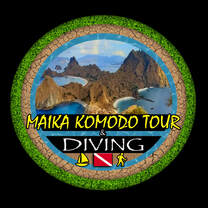 Scuba diving in Komodo National Park is an experience of a lifetime and a top favorite among divers from all over the world. The park is home to Komodo dragons, the world's largest lizards, and an abundance of marine species, making it a popular destination for diving. The area is protected, having been declared a UNESCO World Heritage Site in 1991, and was even selected as one of the New 7 Wonders of the Nature. Komodo National Park boasts two distinct underwater environments: the Flores Sea on the northern side and the Savu Sea and Indian Ocean on the south. These waters are connected by the Sape, Linta, and Molo Straits. From April to November, the clear, warm waters from the Banda and Flores Seas create an ideal environment for hard corals and seamounts, while the deeper, colder currents from the Indian Ocean bring forth planktonic life to the south. Reversing from December to March, the warmer waters move to the south while the cooler, greener conditions take over the north. Komodo is also famous for its high-energy, adrenaline pumping dive sites and the powerful tides that surge through the wide straits and narrow channels. These immense water movements produce a grand mix of different tide conditions, granting divers the opportunity to explore great visibility, current-washed seamounts, sheer black basalt walls, inlets, and dazzling coral gardens. It is highly recommended to have an advanced diving certification as many of the dive sites are susceptible to strong currents. The marine life in Komodo National Park is spectacular and includes creatures such as Manta Rays, Sharks, Sea Turtles, Spotted Eagle Rays, Nudibranch, Trigger Fish, Fusiliers, Cuttle Fish, Groupers, Sea snakes, and many more. This is another reason why Komodo underwater photography is so popular as well. As well as many kinds of different coral to see. Some of the most popular dive sites include Manta Point, Batu Bolong, Castle Rock, Tatwa Kecil, The Passage, Three Sisters, Red Beach, Light House, Langkoi Rock, Crystal Rock, Karang Makassar Reef, Siaba Besar, Crystal Bay, Sebayur Islands Tatawa Islands, The Passage, Yellow Wall, Secret Garden, Payung, Police Corner, Batu Tiga and many more. Maika Komodo Tour & Diving offers Komodo Island tours and Komodo tours, allowing visitors to explore the wonders of the park in either single-day trips or multi-day trips. From the stunning views of the Flores Sea to the deep, cold waters of the Indian Ocean, Maika's experienced dive masters will guide you through the National Park's unique ecology and breathtaking scenery, with the chance to spot an array of sea creatures, such as turtles, manta rays, spotted eagle rays, barracuda, Napoleon wrasse, bumphead parrotfish, black tip and reef sharks, dogtooth tuna, giant trevally, mackerel, spiny devilfish, leaf scorpionfish, tiny amphipods, stargazers, sea apple, ghost pipefish, cuttlefish, bobtail squid, garden eels, bobbit worms, octopus, cucumbers, sponges, pygmy seahorses, colorful soft corals, frogfish, dugongs, electric rays, and many more species. To to have more freedom in your itinerary is it recommended to take a Private Komodo Liveaboard. For Komodo Tours we offer multiple options and every one of them can have a personalised Komodo Island tour as well. As well we offer Private Komodo cuises and shared options, depending on what our guests are looking for. If you have any questions about scuba diving in Komodo or a leisure trip, please send our team a message or stop by our office in Labuan Bajo. Maika Komodo tour - Whatapp Number +62 812-3855-3678 Maika Komodo Tour & Diving address. Jl. Soekarno Hatta, Labuan Bajo, Kec. Komodo, Kabupaten Manggarai Barat, Nusa Tenggara Tim. 86763, Indonesia Komodo Island Tours and Diving Amy visited our dive shop two weeks ago and our Liveaboard Komodo diving trip for 4 days, and apparently she loved it so much, she sent us here new song lyrics. Thank you very much Amy, we can’t wait to hear the recording with you finish it. Maybe we will play in on the dive boat and in the tour office. Thank you for choosing our company for your Komodo Tour Package. Our crew enjoyed your entertainment and still talks about it!
From Amy “Hello Guys, I am back home now and just wanted to say the 4 days I spent in Komodo truly change my life, I even wrote a song about it. It is not finished but soon I will record it and send it to you! Thank you again for such a wonderful experience! All the best - Amy! Song Verse 1: Diving in the Komodo depths, Under the Labuan Bajo sunsets, Exploring the beauty and the life, On a Komodo Island Tour. Chorus: Scuba diving adventures, Pink Beach and Komodo Dragons, Komodo Tour Packages and Diving Batu Bolong, Exploring the beauty of the underwater world. Verse 2: Searching for the hidden treasures, Underneath the crystal clear sea, The coral and the fishes, A sight to behold so beautifully. Chorus: Scuba diving adventures, Pink Beach and Komodo Dragons, Komodo Tour Packages and Diving Batu Bolong, Exploring the beauty of the underwater world. Bridge: Oh, the beauty of the Komodo depths, The colours of the coral and the sea, Exploring and discovering, A sight to behold so majestically. Chorus: Scuba diving adventures, Pink Beach and Komodo Dragons, Komodo Tour Packages and Diving Batu Bolong, Exploring the beauty of the underwater world. “Hopefully I will have a better version next time I see you all, and please tell Yon, I will keep my promise and be a scuba dive master next time I see him, I am sure of it. I truly left a piece of my heart in Labuan Bajo and Komodo National Park. It’s probably the most beautiful place I have ever seen in my life. Thank you again!" 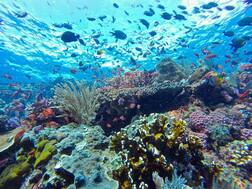 As any experienced scuba diver knows, Indonesia is a scuba diver's paradise, with its clear waters, diverse marine life, and beautiful coral reefs. Indonesia over 17,500 islands and covers a very large area of ocean, so of course, it's no wonder that it is home to some of the best scuba diving spots in the entire world. From the famous dive sites of Bali, Raja Ampat, and Komdo to the lesser-known gems of Wakatobi and Lembeh Strait…there is something for every type of scuba diver in Indonesia. Many divers start with Scuba diving in Bali, which is known for its crystal clear waters and vibrant coral reefs. The island is home to several world-renowned dive sites such as the USS Liberty shipwreck (in the north) and the famous Manta Point. The USS Liberty shipwreck, which is located off the coast of Tulamben, is a must-see for all divers that would like a great dive site while visiting Bali. The ship was deliberately sunk in the early 1940s as a result of an attack that happened during World War II. It now serves as an artificial reef and home to a diverse array of marine life. Manta Point, which is located off the coast of Nusa Penida, is another popular spot for diving in Bali. This dive site is known for its large population of Manta rays which are often seen here all year-round. Moving on to another fantastic place to dive which is Raja Ampat. This area is located in the far east of Indonesia and is considered by many vistors to be one of the best diving destinations in the world. The area is home to over 1,500 different species of fish and 600 different species of coral. This makes it one of the most biodiverse marine environments on the entire planet. Raja Ampat is also home to several world-renowned dive sites such as Melissa's Garden and Mioskon Island. Melissa's Garden, which is located near the island of Batanta, is a must-see for anyone that is diving Raja Ampat. The site is known for its large population of soft corals, which are often seen at this location all year-round. Mioskon Island, located off the coast of Batanta, is another popular spot for diving in Raja Ampat. This site is known for its large population of Manta rays which are often seen here all year-round as well. Another great diving spot is called Wakatobi. It is located in Southeast Sulawesi. This area is known for its crystal clear waters, healthy coral reefs, and diverse marine life as well. Wakatobi is home to several world-renowned dive sites such as Hoga Island and Tomia Island. Hoga Island, located in the heart of Wakatobi, is an absolute must-see for all divers that are visiting the area. The site is known for its large population of Manta rays which are often seen here all year round. Tomia Island, located off the coast of Wakatobi, is another popular spot for diving. This site is known for its diverse marine life, including large schools of fish, sharks, and turtles. Last but not least, is to go scuba diving in Komodo National Park, which is located in the Lesser Sunda Islands and is home to the famous Komodo dragons. The park is not just famous for its dragons but also for the beautiful coral reefs and diverse marine life. The park is home to several world famous dive sites such as the Castle Rock, Crystal Rock, Batu Bolong, and Makassar Reef. Castle Rock, which is located at the north of Komodo Island, is a must-see for all divers visiting the park. The site is known for its deeper dives and strong currents which tend to bring larger animals. Crystal Rock, located near the north part of Komodo Island as well, is a very popular spot to dive. This site is known for its large population of sharks and strong current. The two dive site in the middle of the park that are also very famous is Batu Bolong and Makassar Reef. Batu Bolong offers a diversity of underwater creatures and coral and sometime has strong currents. Makassar Reef is famous for seeing Manta Rays. You can usually see them almost all year round. If you are scuba diving Indonesia, we hope you can make it to some of the locations, as they offer a wide range of diving options for divers of all levels. From Bali to Raja Ampat, Wakatobi to Komodo National Park, there is something for everyone. With its crystal clear waters, diverse marine life, and beautiful coral reefs, Indonesia is absolutely a scuba diver's paradise. If you are planning a scuba dive trip, make sure to add Indonesia to your list and enjoy the underwater world. You can see many interview from dive guides and Komodo chefs as well. 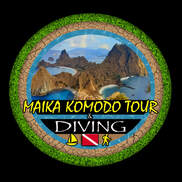 Komodo Island is well known for its incredible marine life and beautiful coral reefs, making it a top destination for scuba diving enthusiasts from all over the world. The island is home to a wide variety of marine creatures including mantas, sharks, turtles, and an abundance of tropical fish. If you're planning on visiting Komodo National, you won't want to miss out on the opportunity to explore the island's underwater world. Scuba diving in Komodo is an experience like no other, and it's a great way to discover the island's unique marine life and coral reefs. When it comes to diving in Komodo, there are a few things to keep in mind. Firstly, it's important to note that diving in Komodo can be challenging due to the strong currents and varying visibility. However, with the help of experienced guides and dive masters, you'll be able to navigate these conditions and discover the best diving spots on the island. One of the most popular diving spots in Komodo is the famous Manta Point. This spot is known for its large populations of manta rays and other marine creatures. The diving here usually has a light current, but the rewards are well worth it. If you're lucky, you'll be able to swim alongside the majestic manta rays and witness their graceful movements. Another popular diving spot in Komodo is the Batu Bolong dive site. This site is known for its beautiful coral reefs and diverse marine life. The coral reefs here are home to a wide variety of tropical fish and other marine creatures, making it a great spot for both novice and experienced divers. Komodo National Park also offers great diving opportunities for those interested in macro diving. The island's waters are home to a wide variety of small marine creatures including frogfish, seahorses, and colorful nudibranchs. These creatures can be found in the shallow waters around the island and are a favorite among macro photographers and enthusiasts. When it comes to diving in Komodo, safety is of the utmost importance. That's why it's important to choose a reputable and experienced tour and diving company like Maika Komodo Tour & Diving. Our experienced guides and dive masters are trained to ensure that you have a safe and enjoyable diving experience. We will provide you with all the necessary equipment and training, and we'll take you to the best diving spots on the island. In conclusion, scuba diving in Komodo Island is an experience like no other. The island's marine life and coral reefs are truly breathtaking, and there's something for every level of diver to enjoy. With the help of experienced guides and dive masters, you'll be able to navigate the challenging conditions and discover the island's underwater wonders. Join us at Maika Komodo Tour & Diving and discover the wonders of Komodo's underwater world. 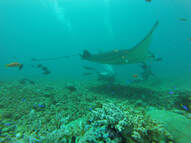 Advice to Beginner Divers, Advanced Divers, and Scuba Instructors. Scuba diving is an exciting and rewarding activity that allows you to explore the underwater world and see marine life up close. If you are a beginner scuba diver, here are some tips and advice to help you get started:
If you are an experienced, advanced scuba diver, here are some tips and advice to help you continue to improve your skills and stay safe: These are great to remember if you are Scuba Diving in Komodo National park as well.
If you are a scuba diving instructor, here are some tips and advice to help you effectively teach and mentor your students:
|
Details
AuthorI have been in the scuba diving industry in Komodo National Park for more than 10 years. Archives
June 2023
Categories |
- Komodo Island Tours & Diving
-
Komodo Day Trips
-
LIve-Aboard Packages
-
Scuba Dive Komodo
- Open Water Course Certification
- Advanced Adventurer Course
- Try Scuba Diving in Komodo
- Our Komodo Daily Diving Boat "Global Nomad"
- Komodo Tour 3 Days 2 Nights
- Scuba Diving Prices
- Top 10 Komodo Scuba Diving Locations >
-
Scuba Diving FAQ
>
- What Scuba Courses Do You Offer? >
- Komodo Scuba Diving Etiquette >
-
Proper Dive Planning in Komodo National Park
>
- Tips for Beginner Scuba divers in Komodo >
- Benefits of scuba diving for your health and well-being >
- Scuba Diving Regulators
- Our Favorite Dive Computers (Best Scuba Dive Computers
- Our Top Scuba Mask for Komodo National Park
- Recommended Wetsuits for Scuba Diving In Komodo
- Find the Best Fins for Diving Komodo
- The Role of Coral Reefs in Komodo
- Plastic Pollution in Komodo National Park
- What can you see Scuba Diving in Komodo National Park? >
- Scuba Diving Padar
- Underwater Photography in Komodo >
- Combo Tour/ Komodo/ Leisure/ Diving
- The Ultimate Guide to Komodo Scuba Diving >
- Komodo Locations
- Wae Rebo/Komodo Discovery
- Flores Overland Trips
-
Komodo Map
- General Information About Komodo Island >
-
Things to do in Komodo
>
- Mastering Photography techniques in Komodo National park and Padar
- Komodo Island Adventure Activities >
- Scuba Diving From Menjaga Bay
- Festivals and Events in Komodo National Park
- Komodo (Flores) Youth Retreat
- Komodo Island Hotels
- Weather and Climate Information for Travellers to Komodo National Park
- Komodo Dragons Information >
- Komodo Island Trekking Guide >
- Komodo National Park Wildlife Guide >
- Komodo Island Environmental Conservation Guide >
- Top 5 Locations in Komodo for Leisure Boat Trips
- Top 5 Beaches in Komodo
- Komodo Island Tour Price
- Komodo National Park Information
- Labuan Bajo Trip
-
Komodo Island Tourism
- About Us
- Need Help with other services
- Komodo Island Tours Blogs
- Komodo Tours Blog
- Scuba Diving Komodo Blog
- Komodo National Park Information
-
Komodo Ultimate Guides
- The Ultimate guide to choosing a Mask and Fins in Komodo
- The Ultimate Guide to Understanding Mangarri culture in Komodo and Flores Indonesia
- The Ultimate Guide to Taking Quality Photography of Komodo Dragons
- Ultimate Guide to Komodo Macro Life
- The Ultimate Guide to Studying Fish in Komodo National Park
- Ultimate Guide to choosing a scuba tank
- Taking good photos in Komodo
- Komodo testimonies with Maika Komodo Tour & Diving
- Indonesia Facts
- The Flores Sea
- Pages of Interest for Maika Komodo Tour
- Best Diving Komodo 2024 - Maika Komodo Tour & Diving
- Best Komodo Tours 2024 - Explore Unique Itineraries with Maika
- Best Komodo Dive Sites 2024
- Komodo Island Diving
- Dive Center Komodo
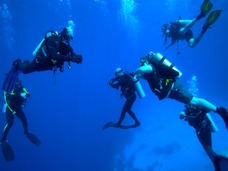
 RSS Feed
RSS Feed
